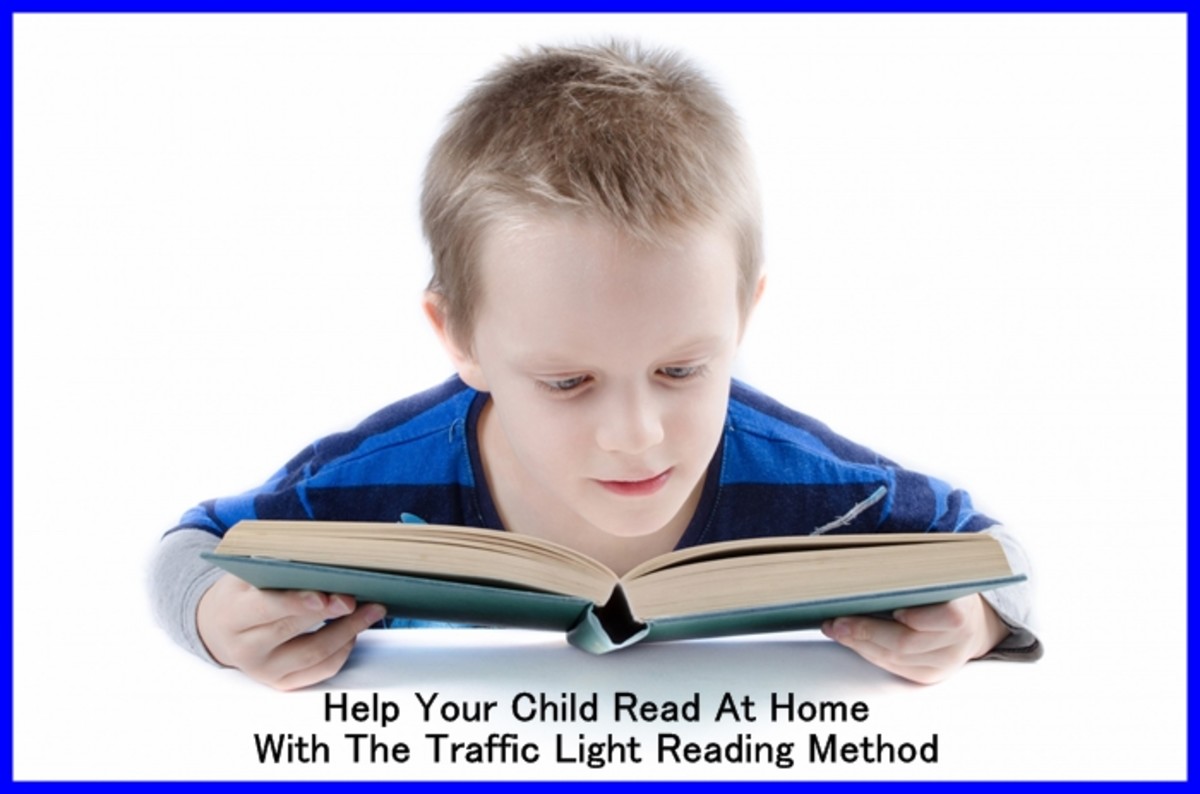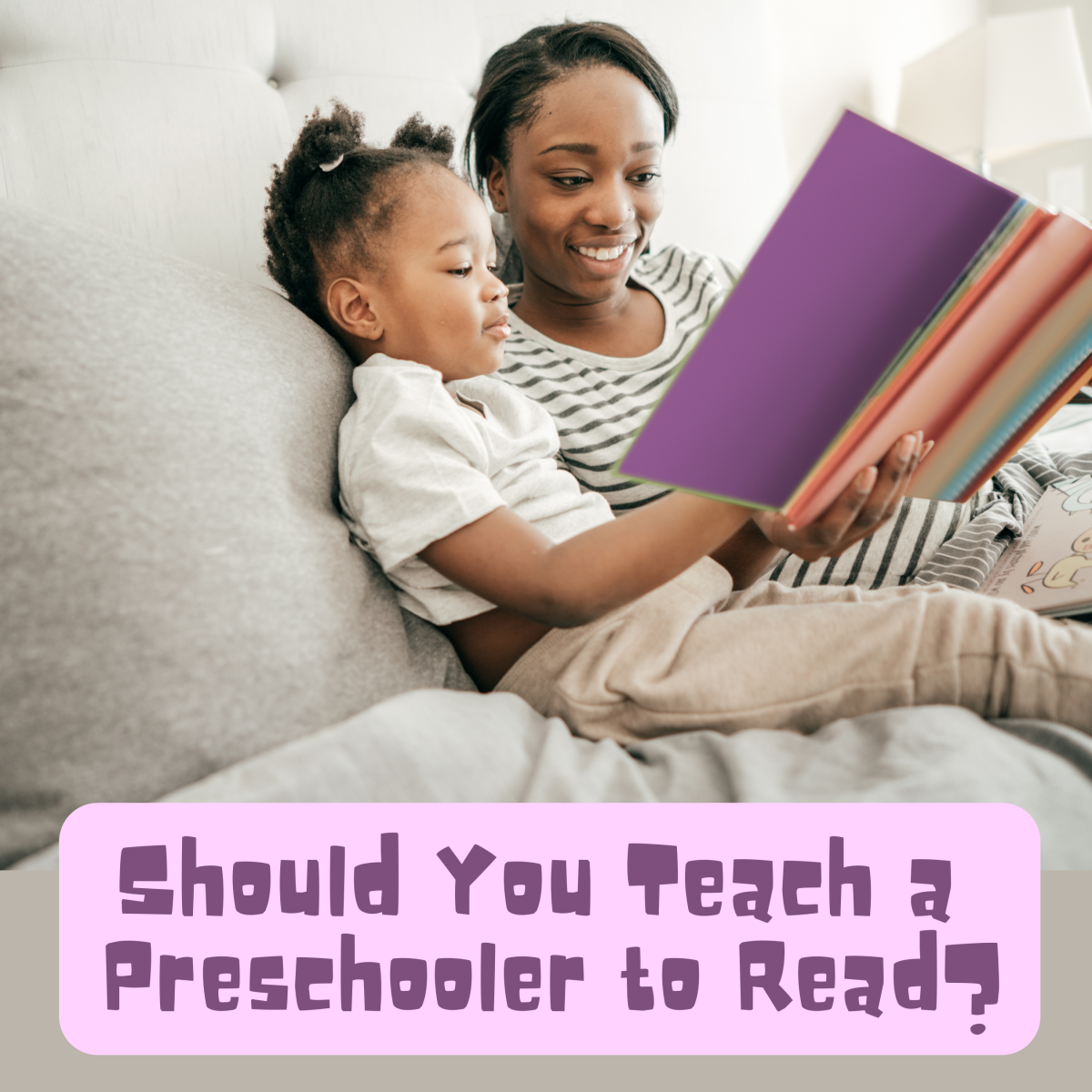Is My Child Too Young To Read?
A Child Is Never Too Young To Read
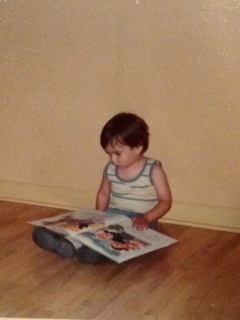
When my son was only an infant I placed a newspaper in front of him with large print just to see what he would do with it. I was amazed to see his reaction to the print. His eyes grew quite large and his hand went back and forth over the paper. I then presented him with magazines and he would look at the colorful ads with such an intense gaze. At six months, I found that he could sit still with a catalog in his lap and be absorbed looking at the pictures for about an hour.
As he grew into the toddler stage, he would pull a book from its shelf and pretend to read aloud. He would point to the pictures and follow the printed words with his finger. Eventually, as he began to speak, he would read the book aloud with emphasis on certain words he found fascinating. When he turned two, through our nightly bedtime ritual, he actually learned to read by listening to me read books and following along.
I include this story about my son simply to demonstrate what a typical child can do if he or she is introduced to print, using age appropriate learning activities, at an early age. Through close contact with an adult within a nurturing environment a child will learn to love to read.
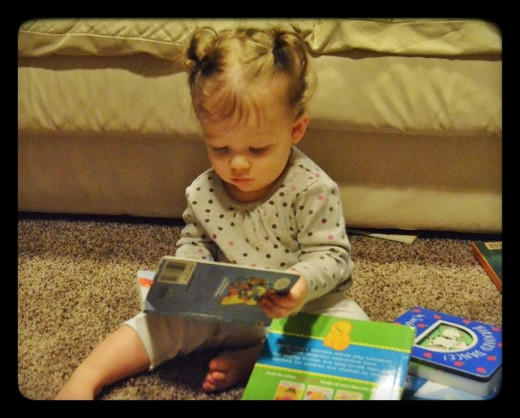
Take a poll
In your opinion, at what age should a child take interest in reading?
Reading Begins At Birth
This may surprise you but it is true: reading begins at birth. As you hold your baby in your arms he or she watches your facial expressions and listens to the sounds you make when you speak. The soft rhythmic tones soothe the child and help him understand that voice inflection and tone of voice mean something. Some mothers read to their child while still in the womb. Doctors claim that this helps foster voice recognition while comforting the baby. All this stimulates an interest in communicating and is an easy transition to teaching your baby to read as he or she grows.
A study in 2005 showed that, out of a sample group of 87 typically developing middle-class eight month old infants who experienced shared reading, language ability was that of a twelve month old (in girls). Although the finding is just months apart, this is remarkable for an infant (source: J. Karrass, JM Braungart-Rieker, Journal of Applied Development Psychology, March, 2005). Infants who are read to at an early age (six months and above) prove to have better disposition, and stronger emotional and intellectual aptitude as pre-schoolers.
Young Children Love To Read
Stimulating Imagination and the Love of Reading
Wordless books with simple pictures or images work well in introducing infants to reading. As you read together point out the pictures, colors and use facial expressions to emphasize your excitement and stimulate interest. At this age, eye contact and touch (touching the pages and your face) are very important and it helps baby to enjoy the reading experience.
As she advances to a toddler, use books with rhyming words, interactive pages, silly songs or nursery rhymes as well so that your baby can connect sound to the printed word. Hold your child on your lap and make sure the pictures and words can be clearly seen. Be ready to read books over and over as children tend to enjoy hearing the same story repeatedly.
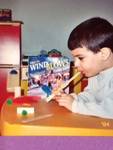
Resource On Teaching Your Child To Read
Encouraging a Child to Read
Young children can also enjoy learning activities as a lead into a story. Be creative in finding ways to make a book come alive through play or simple crafts. In the picture shown, the book When the Wind Blows was introduced through science experiments with wind (simulated, of course).
The child was given the following objects to blow across the table:
- a straw (the wind)
- feather
- wooden craft stick
- large and small pom pom
- small sheet of paper
We formed a simple hypothesis, conducted the experiment and made conclusions. It was fun and quite effective in understanding wind as a force in nature. Remember to use age appropriate words in your discussions and to ask open-end questions to encourage critical thinking.
When doing science experiements, let the child feel the articles and material used and allow them to be creative in making assumptions. By the way, the child in the picture to the right is now in elementary school and reads at a ninth-grade level. We credit this to using learning methods listed in this article.
Experiment Details
Hypothesis
| Do you think the wind can blow this object across the table?
| Observation
|
|---|---|---|
Experiment
| Pom-pom
| Yes - assumption
|
Feather
| Yes - assumption
| |
Craft Stick
| No - assumption
| |
Paper
| Yes - assumption
| |
Conclusion
| Pom-Pom and Feather
| Yes
|
Craft Stick and Paper
| No
| |
Note: (we used simple terms instead of the scientific words in our discussions, i.e. "solid" vs. density)
| We discussed the object’s density, shapes and weight. We changed the paper’s shape to a basic airplane and then changed our conclusion based on the observation: it did blow across the table.
|
You May Also Enjoy This Article
- Encourage Children to Read Using These Tips
As parents, we often find it challenging to get our children to set aside time to read at home once in a while, let alone once a day. Encourage children to read at home with these tips.
Final Word For Young Readers And Parents
A rule of thumb is to have fun introducing your child to print using simple creative activities. Don't push them to read by using rote methods. Although many parents have been successful in teaching a child to read using structured methods , it is best to introduce print within a relaxed non-academic environment. I wrote an article on simple home made books for infants, toddlers and pre-schoolers that are sure to help encourage the love of reading. These books are quite easy to make and will last through many readings together.






